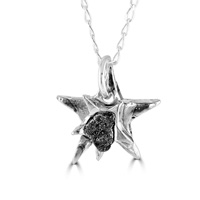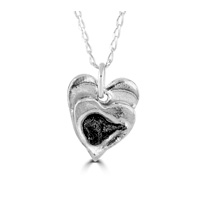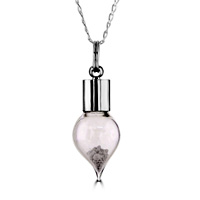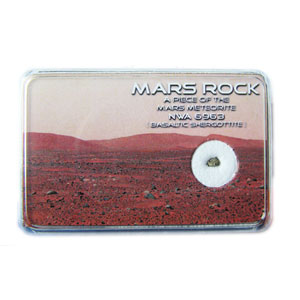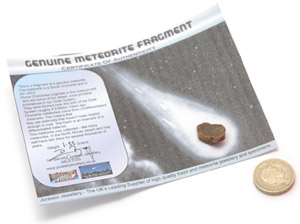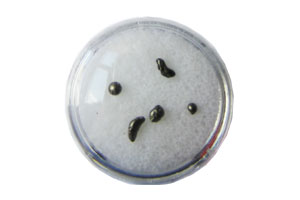Phanerozoic Eon
(543 ma to present day) | Cenozoic Era
(65 ma-today) | Quaternary (1.8 ma to today)
Holocene
(10,000 years to today)
Pleistocene
(1.8 ma to 10,000 yrs)
| - Less than 2,000 years ago: Recorded Human History.
- Iron Age
- Bronze Age
- Possible major impact event leading to Great Flood?
- 10,000 years ago : Modern Man.
- Upper Paleolithic : Neolithic
(End of late Stone Age). - Holocene Extinction ongoing event during the modern era. Includes plants and large mammals known as megafauna due to the last Ice Age and the proliferation of modern humans.
|
- Pleistocene or Ice Age Extinction Event.
- 12-17,000 yrs ago: End of Little Ice Age.
- 100,000 yrs ago : Neanderthal Man
- 300,000 yrs ago : Mesolithic
(Middle Stone Age). - 400,000 yrs ago : Homo Sapiens.
- 700,000 yrs ago: Homo Erectus.
- 1,100,000 yrs ago: Worldwide Ice Age ends.
|
Tertiary (65 to 1.8 ma)
Pliocene (5.3 to 1.8 ma)
Miocene (23.8 to 5.3 ma)
Oligocene (33.7-23.8 ma)
Eocene (54.8 - 33.7 ma)
Paleocene (65 - 54.8 ma) | - Great Ice Age. 1/3 of all land covered by glaciations. Tertiary-Quaternary boundary.
- Many smaller extinctions. Mainly a series of interglacial events. Sea levels and temperatures rise and fall. Tiny shell-bearing sea creatures lost.
- 2.5 Ma Homo habilis
(Paleolithic, Old Stone Age). - Early grazing animals including horse.
- Early primates, cats, dogs, rabbits.
- Small mammals : rats, mice, squirrels have changed from egg laying to viviparity (placental).
- Alps form due to collision of the European and African tectonic plates.
|
Mesozoic Era
(248 to
65 ma) | Cretaceous (144 to 65 ma)
| - 65 Million Years : Dinosaurs became extinct, plus up to 50% of all other species.
- Cretaceous-Paleogene Transition extinction event:
- K-T Boundary Layer supports impact theory. Possibly by multiple impacts by disrupted Carbonaceous asteroid or comet broken up in the atmosphere. Possible event sites: Chicxulub Crater, centered on Yucatan Peninsula, Mexico. Silverpit Crater (North Sea area) UK. & Boltysh Crater, Ukraine.
- Rocky Mountains form due to tectonic plate collision, and subduction of old seabed.
- First modern Birds.
- Primitive marsupial mammals like Kangaroos.
- Age of Reptiles.
|
| Jurassic (206 to 144 ma) | - Minor Mass Extinctions linked to an oceanic anoxic event. Ammonoids affected.
- Pangaea super continent separates.
- Dinosaurs dominant
- Early flowering plants.
- Early birds and primitive mammals.
|
| Triassic (248 to 206 ma) | - Triassic-Jurassic Transition : Mass extinction : 20-35% lost. Most early dinosaur families, many marine invertebrates and mammal-like reptiles.
- Fist dinosaurs and first egg-laying mammals.
- First flying vertebrates, the pterosaurs, (toothed birds).
- Opening of the Atlantic due to tectonic plate movements.
- Climate generally hot and dry forming red bed sandstones and evaporites.
- Polar regions moist and temperate.
- Adaptive radiation (after mass extinction): rapid evolution diversification of a few species to fill many ecological niches. By natural selection, adaptation or mutation.
|
Paleozoic Era
(543 to
248 ma) | Permian (290 to 248 ma)
| - P/Tr or Permian-Triassic extinction event. Largest Mass extinction : 95% of all marine life + 70% of land species lost.
- Theory : Meteorite Impacts affected Earths core and mantle and triggered off Super Volcanism and subsequent Methane release from the oceans.
- Theory : Oxygen removal from both land and sea. Plus Hydrogen Sulfide toxicity.
- Theory : Rise and fall of gravity field.
- Theory: Extinction period came in 3 waves.
- Theory 1 : Meteorite Impact event in the super ocean Panthalassa or the East Antarctic Ice Sheet Crater (crater 300 miles wide), also crater at Bedout High seabed off Australia.
- Theory 2: Super volcanism. Massive flood basalt eruptions over thousands of years : Siberian Traps.
- Theory 3: Methane release over thousands of years from deep oceans after ocean temperatures rise by approx 5°C.
Recorded changes to carbon isotopes. - Advanced conifers.
- Reptiles, Dragonflies, Roaches, Beetles, Flies.
- Mammal-like reptiles.
- Fossils : Trilobites, mollusks, corals and brachiopods.
- Final assembly of Pangaea.
- Ice Age: Glaciers cover most of Gondwanaland.
|
Carboniferous (354 to 290 ma)
Pennsylvanian
(323 to 290 ma)
Mississippian
(354 to 323 ma) | - Climate change : glacial periods to warm.
- Early bark bearing trees including conifers
- Formation of coal deposits.
- Low sea levels, swamps and generally warm climate.
- Age of Plants. Flowerless spore-forming plants and ferns.
- Amphibians dominant : Large air breathing Insects and Amphibians inhabit Carboniferous swamps.
- 36% Higher oxygen content in the atmosphere than today, allowing arthropods to grow larger
- First Sharks and Reptiles.
- Mississippian: Earth Tectonic Movements produced Supercontinent : Pangea.
|
| Devonian (417 to 354 ma) | - Devonian-Carboniferous Mass Extinction transition series (lasting over 20Ma) ~ 70% of species lost.
- Devonian : Ammonites, marine animals, primitive air breathing fish evolved into the first tetrapods (amphibians).
- First forests.
- Terrestrial Arthropods: Includes Insects, Arachnids, Crustaceans and others.
- Age of Fish : Fossils Mainly marine animal life, jawed fish and invertebrates.
|
| Silurian (443 to 417 ma) | - Extinction event. Theories possibly caused by climate change, low sea levels due to glaciers, changes in ocean mixing and hyper salinity.
- Primitive vascular land plants.
- Moss forests, and first soils.
- Multi-cellular relatives of modern spiders and millipedes.
- Fish with jaws and air breathing animals.
- Trilobites abundant then generally in decline.
- Super continent : Gondwanaland.
|
| Ordovician (490 to 443 ma) | - Ordovician-Silurian Transition. 85% of species lost. Two extinction events during the Ordovician, devastates marine and reef building organisms, including some Trilobites.
Possible explanation: onset of glaciation and interglacial periods. Sea levels rose and fell. - Early primitive jawless fish.
|
Cambrian (543 to 490 ma)
Tommotian
(530-527 ma) | - Extinction event : Marked fall in carbon-13 isotope. Theory: due to a reduction in bacteria, temporarily out-competed by new multicelluar biomass organisms.
- Hard bodied shelly fauna: Arthropods known as Trilobites, and primitive reef-forming animals.
- Invertebrates dominant; worms, jellyfish, trilobites.
- Multi-celled life forms start to take hold.
"ancient life"
|
Precambrian
(4,500 to 543 ma) | Proterozoic Era
(2500 to
543 ma) | Neoproterozoic (900 to 543 ma)
Ediacaran (630 to 543 ma)
Cryogenian (630-850ma)
Tonian (850 to 1000 ma) | - First great extinction event : 70% of all organic lost.
Radiation of acritarchs
(possibly due to major impact event). - Volcanic Activity released huge quantities of carbon dioxide and methane over 1,000+ years, Greenhouse effect ends Ice Age.
- Severe Ice Age (Snowball Earth/Cryogenian Period), ice sheets extend to equator.
- 750Ma Rhodinia super continent broke up.
- Multi-cellular life, including earliest animals.
- "visible life" Early shelled organisms.
|
Mesoproterozoic
(1600 to 900 ma) | - Explosion of bio diversity.
- Evolution of sexual reproduction.
- Accumulation of oxygen in the atmosphere.
- Formation of super continent : Rhodinia
- 1.5Ma Columbia super continent broke up.
|
Paleoproterozoic
(2500 to 1600 ma)
Early Oxidizing Atmosphere | - Cyanobacteria: Blue-green algae & Stromatolytes giving off oxygen lead to evolution of Earths early primitive oxidizing atmosphere.
- 2.5Ma Kenorland super continent broke up.
- Oxygen Catastrophe : atmosphere becomes poisonous to anaerobic bacteria.
|
Archaean Era
(3800 to
2500 ma)
| Archeozic
Reducing Atmosphere
| - "earlier life" earliest fossils : Stromatolytes start to produce oxygen as by product of early photosynthesis.
- Anaerobic single celled micro-organisms: bacteria & viruses flourish in Earths early reducing atmosphere.
- 2.8Ma super continent : Vaalbara broke up.
|
| Hadean Era
(4600 to
3800 ma) | Azoic Time : No Atmosphere Formation of the moon probably by giant impact. Largest hit Earth has ever suffered. Planetary accretions during the formation of Solar System.
approx 4.6 to 3.8 Billion years ago. | - Azoic Rocks, (no organic life forms).
- 3.8 billion years : banded iron beds, Greenland.
- No atmosphere.
- Formation of Earths Crust.
- Zircon crystals date from 4440 Ma.
- Meteorite bombardment. Oldest meteorites found ~ 4.6 Billion Years Old.
|
KEY: ma = million years | |









